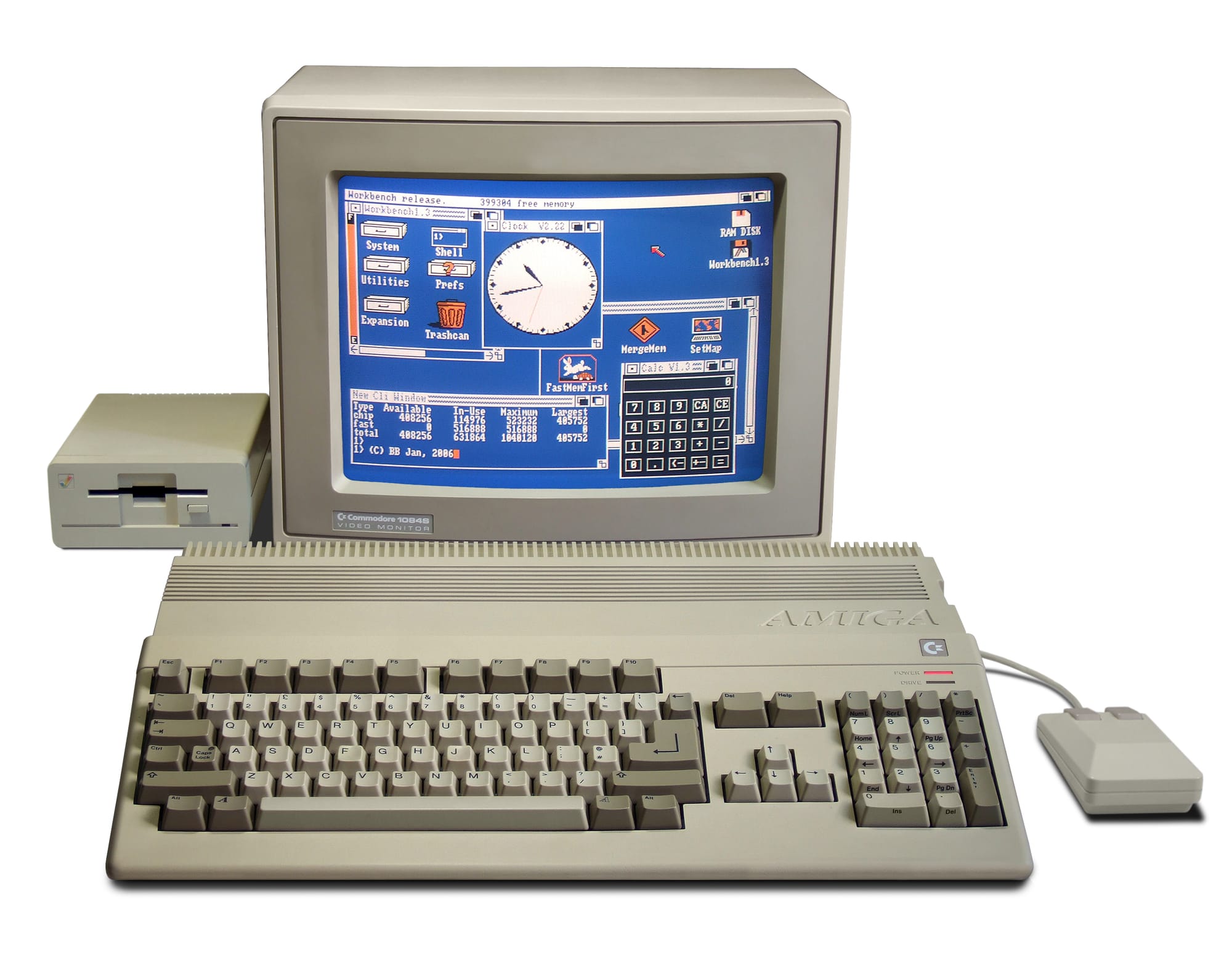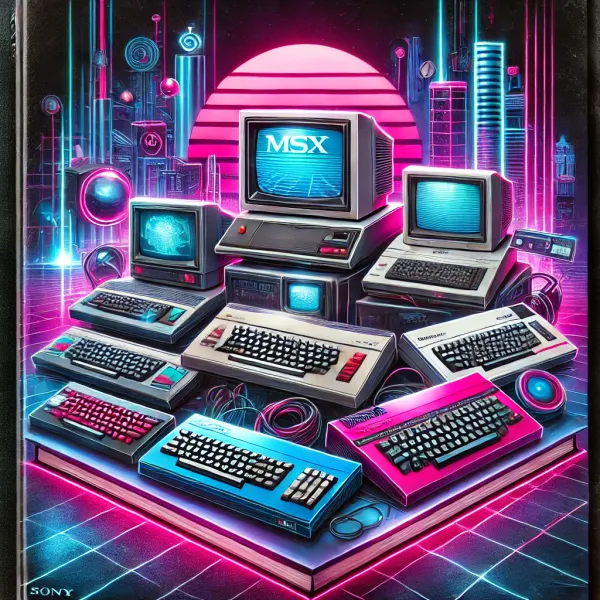Amiga 500: A multimedia powerhouse for gaming and creativity
Released in 1987, the Amiga 500 was part of the revolutionary Amiga computer line developed by Commodore. Known for its advanced graphics and sound capabilities, the Amiga 500 was not just another home computer; it was a multimedia powerhouse that redefined what was possible in personal computing. Positioned as a more affordable alternative to the high-end Amiga 1000, the Amiga 500 quickly became a favorite for gamers, artists, and musicians alike.

The Amiga 500’s 16-bit Motorola 68000 processor, 512 KB of RAM (expandable to 9 MB), and impressive graphics and audio hardware made it stand out in a competitive market. It could display up to 32 colors on-screen simultaneously from a palette of 4096, a remarkable feat for the time, and its four-channel stereo sound was unparalleled. The Amiga 500’s technical prowess allowed it to deliver vibrant visuals and immersive sound, making it a perfect fit for creative software and cutting-edge games.
A creative powerhouse for gaming, art, and music
The Amiga 500 wasn’t just a gaming machine; it was a versatile tool for creative work. Programs like Deluxe Paint, a pioneering software for pixel art and animation, were immensely popular on the Amiga platform. Artists could create colorful, detailed graphics with tools that felt intuitive and advanced. Deluxe Paint would go on to influence the world of digital art, with many artists still considering it a classic even today.
Musicians also embraced the Amiga 500. With its four-channel stereo sound and advanced sound manipulation software like Soundtracker, the Amiga allowed users to create complex, layered compositions. The Amiga 500 became a staple in electronic music production, inspiring a generation of musicians and sound designers to experiment with digital sound. This versatility in creative applications solidified the Amiga 500’s reputation as a groundbreaking machine for artists and musicians.
Lemmings: A Game-Changer for puzzle and strategy gaming

One of the most iconic games on the Amiga 500 was Lemmings, developed by DMA Design (now Rockstar North) and released in 1991. Lemmings was a puzzle game that challenged players to guide a group of small, mindless creatures—lemmings—through various hazardous levels. Players could assign specific tasks to individual lemmings, such as digging, climbing, or building, to help them reach the exit safely.
Lemmings combined strategic thinking with real-time problem-solving, and its innovative gameplay made it a massive hit. The game’s unique concept, engaging puzzles, and humorous art style captivated players of all ages. Lemmings quickly became one of the Amiga’s most beloved titles, showcasing the platform’s ability to handle complex animations and dynamic environments. The game was so successful that it spawned numerous sequels and remains a beloved classic.
The success of Lemmings on the Amiga 500 demonstrated the computer’s capability as a gaming platform. The game’s detailed animations, colorful graphics, and addictive gameplay highlighted the Amiga’s strengths, proving that it could deliver more than just visually impressive games—it could offer experiences that were truly unique.
The Amiga 500’s role in the golden age of gaming and computing
The Amiga 500 thrived during the late 1980s and early 1990s, a time often referred to as the Golden Age of Video Games. The computer’s hardware allowed developers to experiment with complex graphics, rich soundscapes, and innovative gameplay mechanics that weren’t possible on other systems. This led to a diverse library of games spanning all genres, from platformers like Shadow of the Beast to adventure games like The Secret of Monkey Island.
In addition to gaming, the Amiga 500’s open architecture and compatibility with peripherals like graphic tablets and MIDI controllers made it a powerful tool for personal and professional use. It became popular in schools, studios, and households, fostering a vibrant community of users who pushed the boundaries of what the Amiga could do. For many, the Amiga 500 was more than just a computer—it was a gateway to creativity and a catalyst for exploration.
The legacy of the Amiga 500
The Amiga 500’s influence on gaming, digital art, and music production is still felt today. Its capabilities paved the way for multimedia computing, inspiring future generations of computers and creative software. The Amiga’s vibrant community of fans and developers helped shape a culture of experimentation and collaboration that remains active, with enthusiasts around the world preserving the Amiga’s legacy through emulation, fan projects, and new game releases.
Although Commodore eventually went bankrupt, the Amiga 500’s legacy endures as one of the most beloved home computers of its time. For those who grew up with an Amiga, the memories of games, art, and music they created on the system are cherished. The Amiga 500 stands as a reminder of a time when computers were as much about creativity as they were about productivity, leaving an indelible mark on the history of personal computing.



